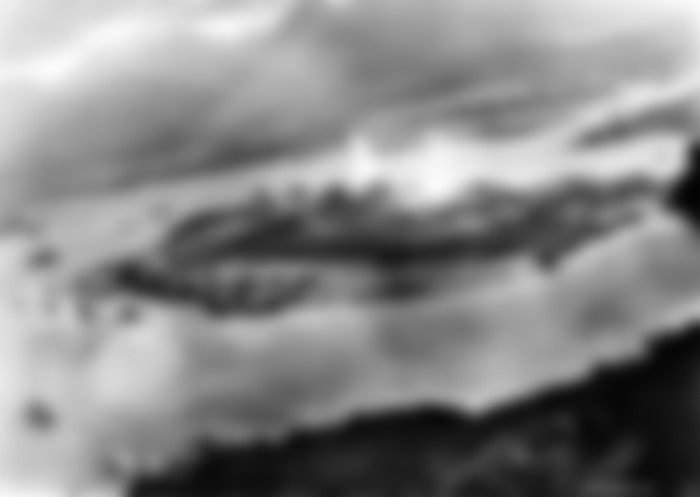At 7.40 a.m. on a quiet Sunday morning at Pearl Harbor US Air Force Base in Hawaii, a surprise attack began one of the most dramatic in world history, without any declaration of war. It was a prodigious but classically military attack that had as its aim the destruction of the US Pacific fleet and which resulted in the decision of Roosevelt and the US Congress to take the field against Japan, provoking the declarations of war by Germany and Italy. The fire raid, conceived by Admiral Isoroku Yamamoto, went on for two hours, delivering death and destruction to the bay: 2,400 victims and 1,700 injured and damage to the US fleet (8 battleships, 3 cruisers, 3 destroyers, 2 auxiliary ships, 1 minelayer and 188 aircraft shot down). For the Japanese it was a great victory crucial to their expansionist aims in the Pacific Ocean. That December 7, 1941, President Franklin Delano Roosevelt called it, speaking at the Congress, the day of infamy and obtained full support for the declaration of war on the Japanese empire.

While America has always been determined to remember that day, Japan would like to wipe out the entire Second World War with a clean sweep. Erase the past and only look forward to the future. This is what the Japanese people have not stopped doing since the aftermath of the bomb, succeeding in cashing in the defeat and becoming a great economic power, this is a natural inclination of theirs (made up of assimilation, metabolism and removal) that they have sewn on in 2000 years of history. By virtue of this innate ease, the Japanese would pretend to pass through history while remaining outside of it. On the part of Japanese historians, Pearl Harbor could not be avoided for the simple reason that the unconditional demands for withdrawal from China and Indochina on the American side amounted to an ultimatum of war. It was, in essence, a colonial conflict for the empire of the rising sun: where Japan tried to emulate America, Great Britain, France and Holland, where all parties would be branded with the mark of infamy. The Japanese expansionist aims were born in '31, the day Hirohito turned thirty, and the Japanese army unleashed the war against Manchuria, a war that was difficult and long (so much so that it would last over four years) and represented the first step of Japanese militarism aimed at upsetting the political and military balance of the Pacific. Today it is fair to ask whether Hirohito was responsible for having thrown his people into the world war, and if so to what extent, for not having known or wanted to use his immense authority against the extremists, and the same question applies to December 1941 when he did not or could not prevent the prodigious attack on Pearl Harbor that Japan would have paid for with two million dead. Many biographers agree that Hirohito was a puppet in the hands of the military, especially those of the army. Surely he allowed himself to be deceived several times by his advisors, so much so that he himself later confessed that he did not understand and did not oppose them. Pearl Harbor was fatal, also because that distant war episode, which remained engraved in American memory, laid bare an unexpected fragility of the American superpower, causing a historical certainty to collapse: the supposed inviolability of its territory and the various commissions of enquiry set up by Congress ascertained serious responsibilities of the high military and government offices, including Roosevelt, in underestimating the Japanese threat. In the end, Pearl Harbor was a fatal miscalculation on the part of the Japanese military regime, which accelerated the final victory of the Allies with the decisive contribution of the United States.
Rich film production on the episode among which we must remember: From Here to Eternity (1953) Zinnemann, Tora! Tora! Tora! (1970) by Richard Fleischer and more recently Pearl Harbor (20019) by Michael Bay. But the first filmmaker to stage Pearl Harbor was John Ford. The story of his December 7, a documentary about the prodigious Japanese assault on the war still in progress in 1943, is very curious. Ford used truly extraordinary images of the assault. With one small detail: they are almost all fake. Think about it for a moment. The Japanese attack, at dawn on December 7, 1941, took the Americans by surprise. How could they have placed cameras everywhere and turned the whole assault around? Above all, how could they have got aerial shots from the Japanese bombers' point of view? Actually, two American cameramen managed to record a few frames of that attack. These materials were made available to Ford, who worked for the army during the war like many other important Hollywood directors. But very few real shots are present on 7 December: the truth is that Ford, given the scarcity of the material, decided to reconstruct the attack in the 20th Century Fox studios, with plenty of models: the special effects of the time. The result is a very strange film, in which two characters describe Hawaii to the American public who have never seen it and explain the reasons for the attack.

A few years ago I watched movie about Pearl Harbor.I remember that I was crying from the grief.